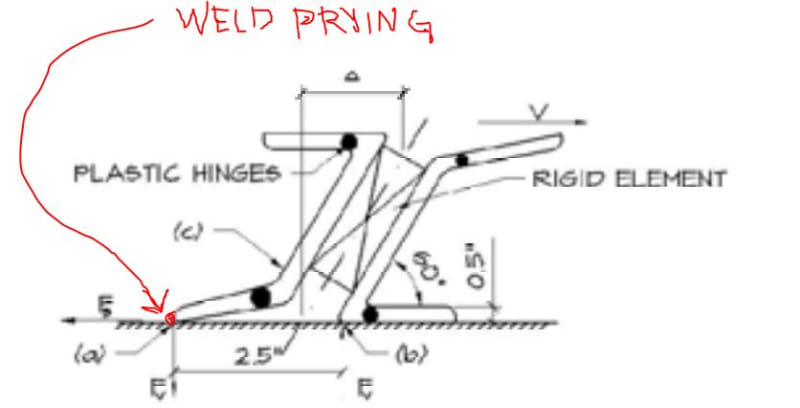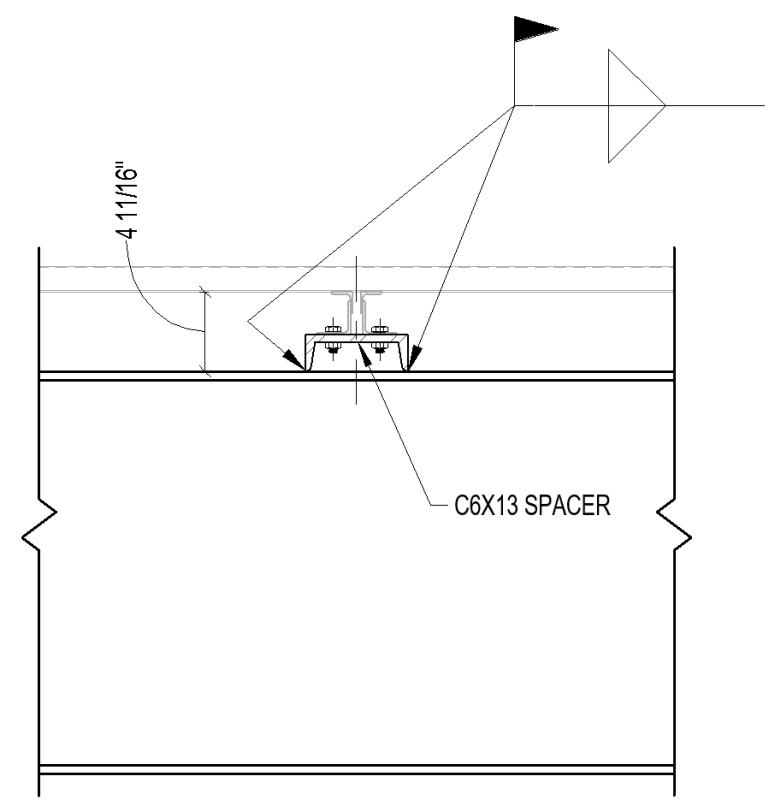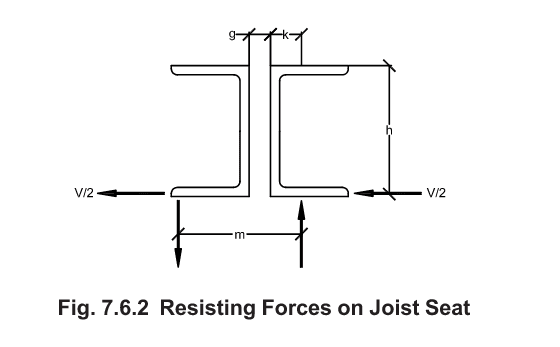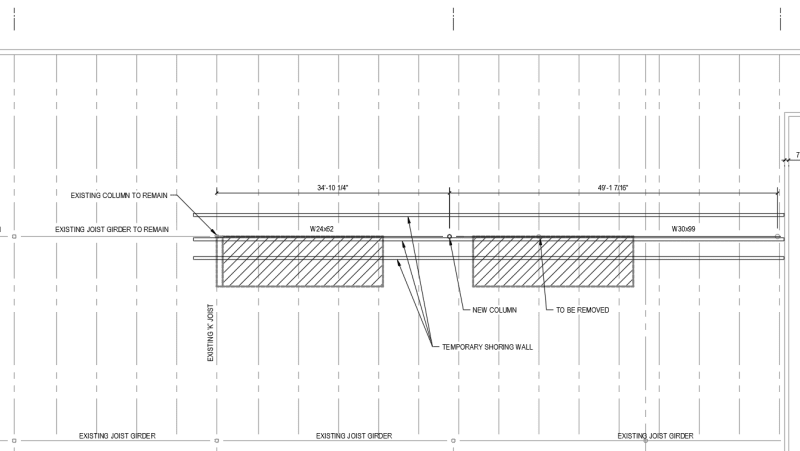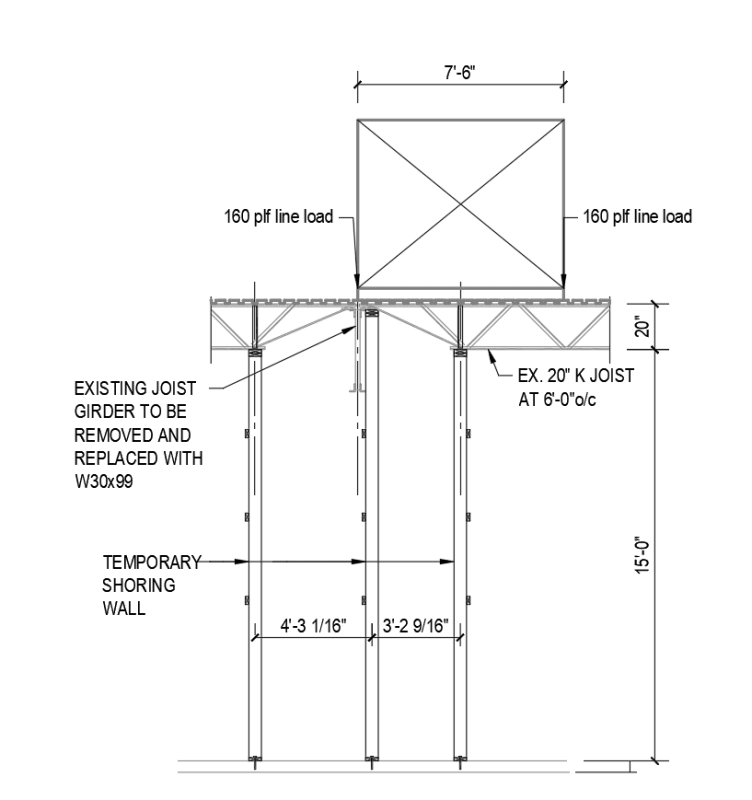Hello!
I am working with a 1-story buidling whereby we are removing a steel column. Joist girders are bearing on the column. If we elect to temporary shore the existing steel joist as needed to remove the existing girder, is there a standard practice for how much of the girder you remove?
For example, should we keep the top chord of the girder and cut out the web members and bottom chord? Then weld the new steel beam to the underside of the existing top chord.
The sketch below shows the new steel beams and columns installed with the existing joist girder completely removed. But now I am thinking that you want to leave the top chord in place since the joist are welded to it.

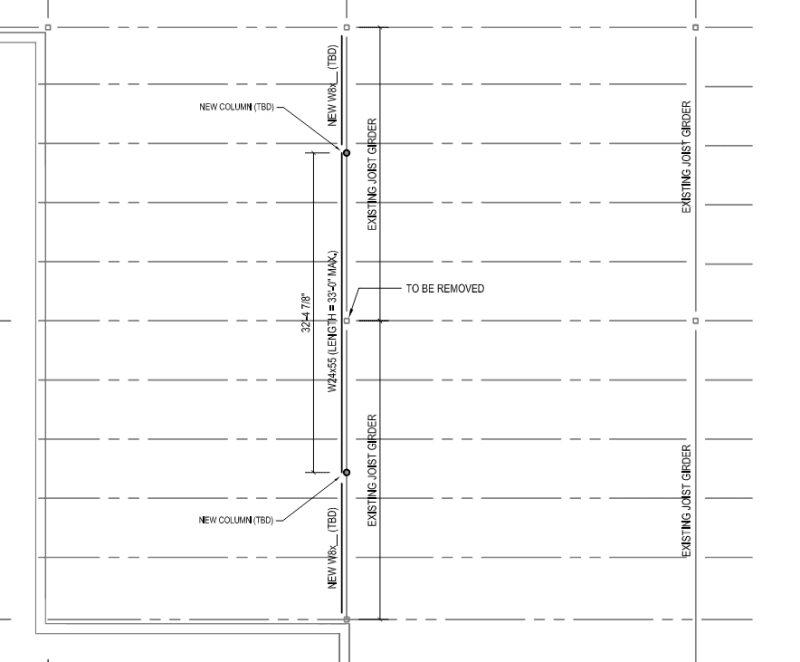
I am working with a 1-story buidling whereby we are removing a steel column. Joist girders are bearing on the column. If we elect to temporary shore the existing steel joist as needed to remove the existing girder, is there a standard practice for how much of the girder you remove?
For example, should we keep the top chord of the girder and cut out the web members and bottom chord? Then weld the new steel beam to the underside of the existing top chord.
The sketch below shows the new steel beams and columns installed with the existing joist girder completely removed. But now I am thinking that you want to leave the top chord in place since the joist are welded to it.



